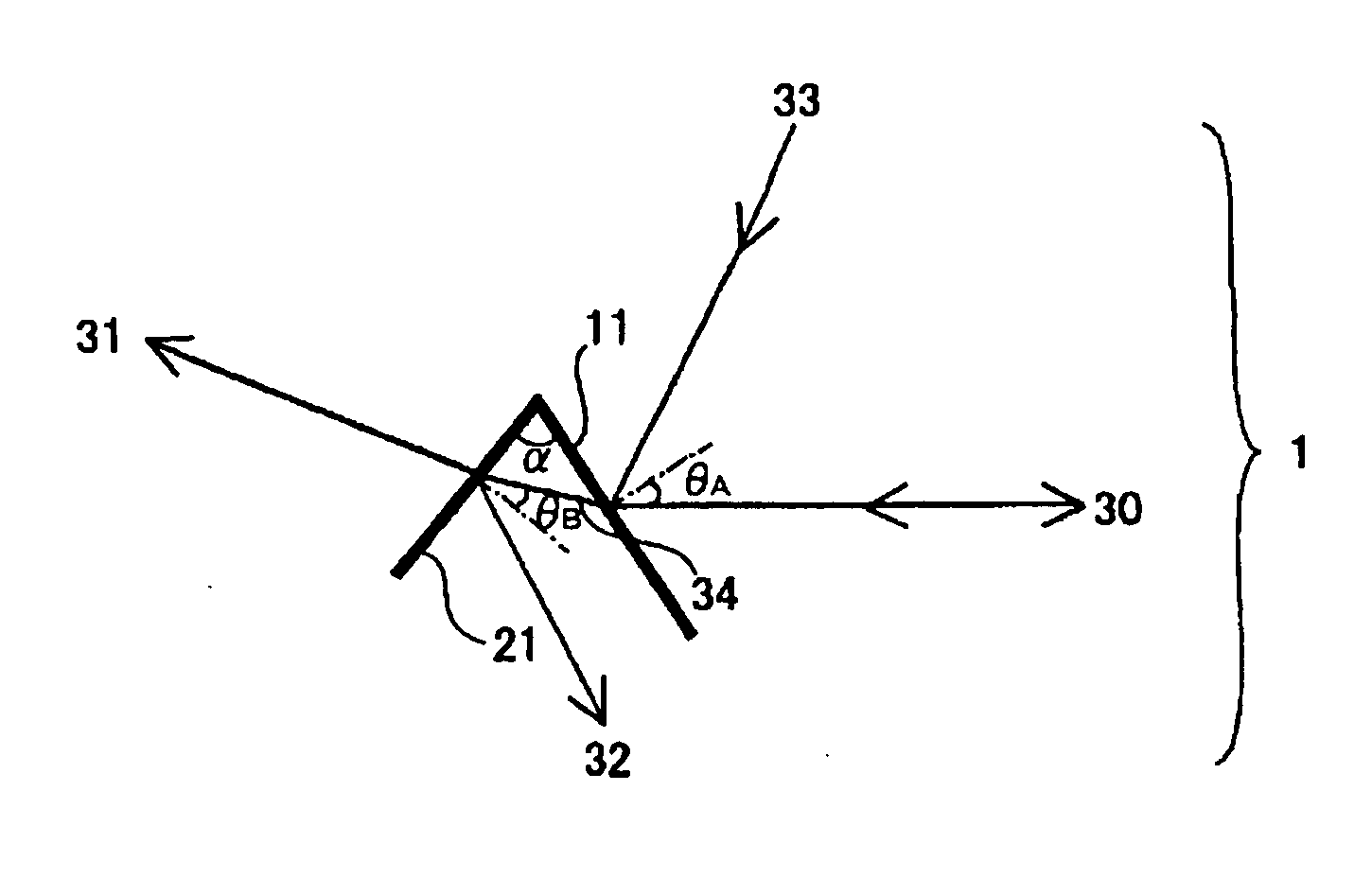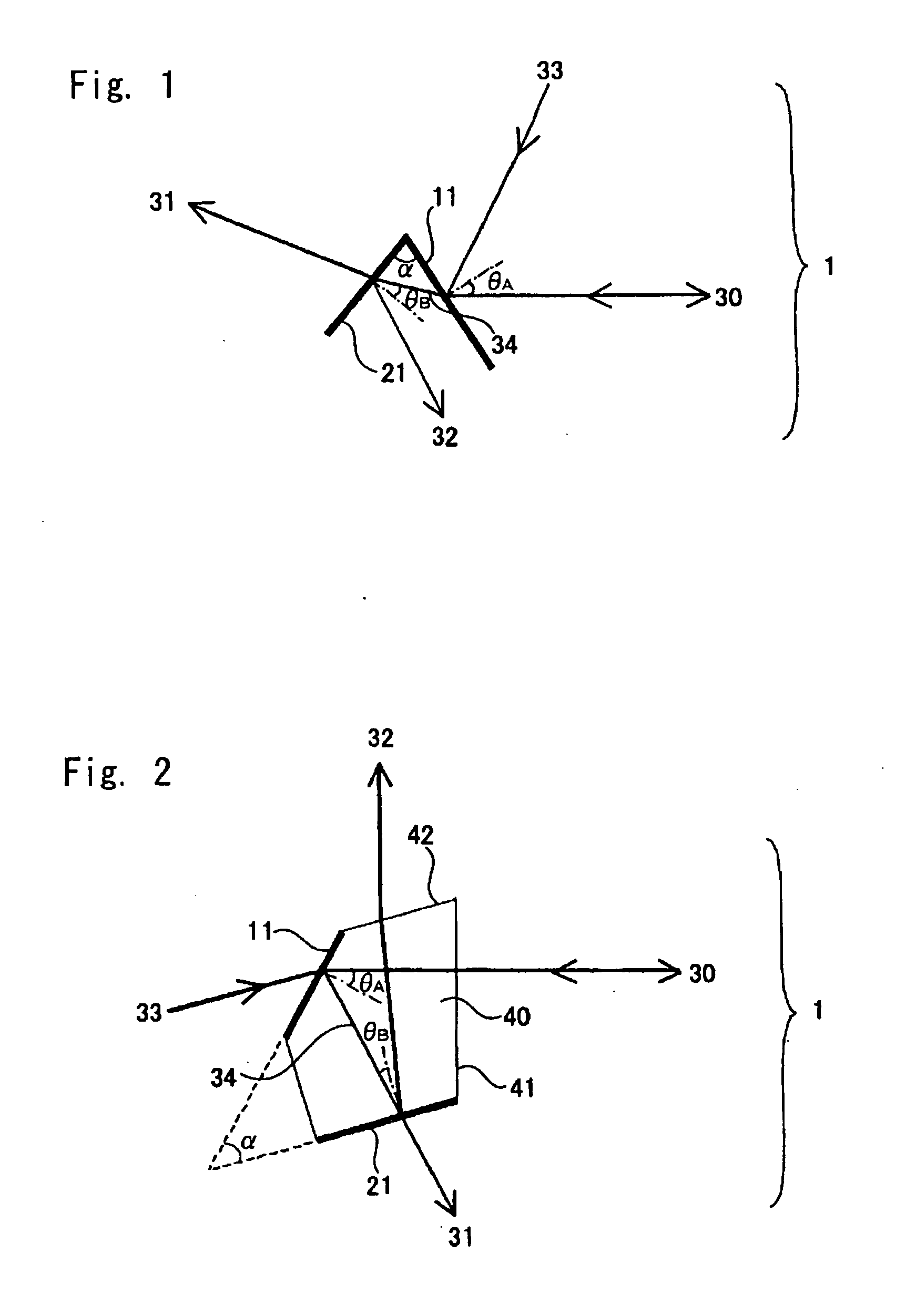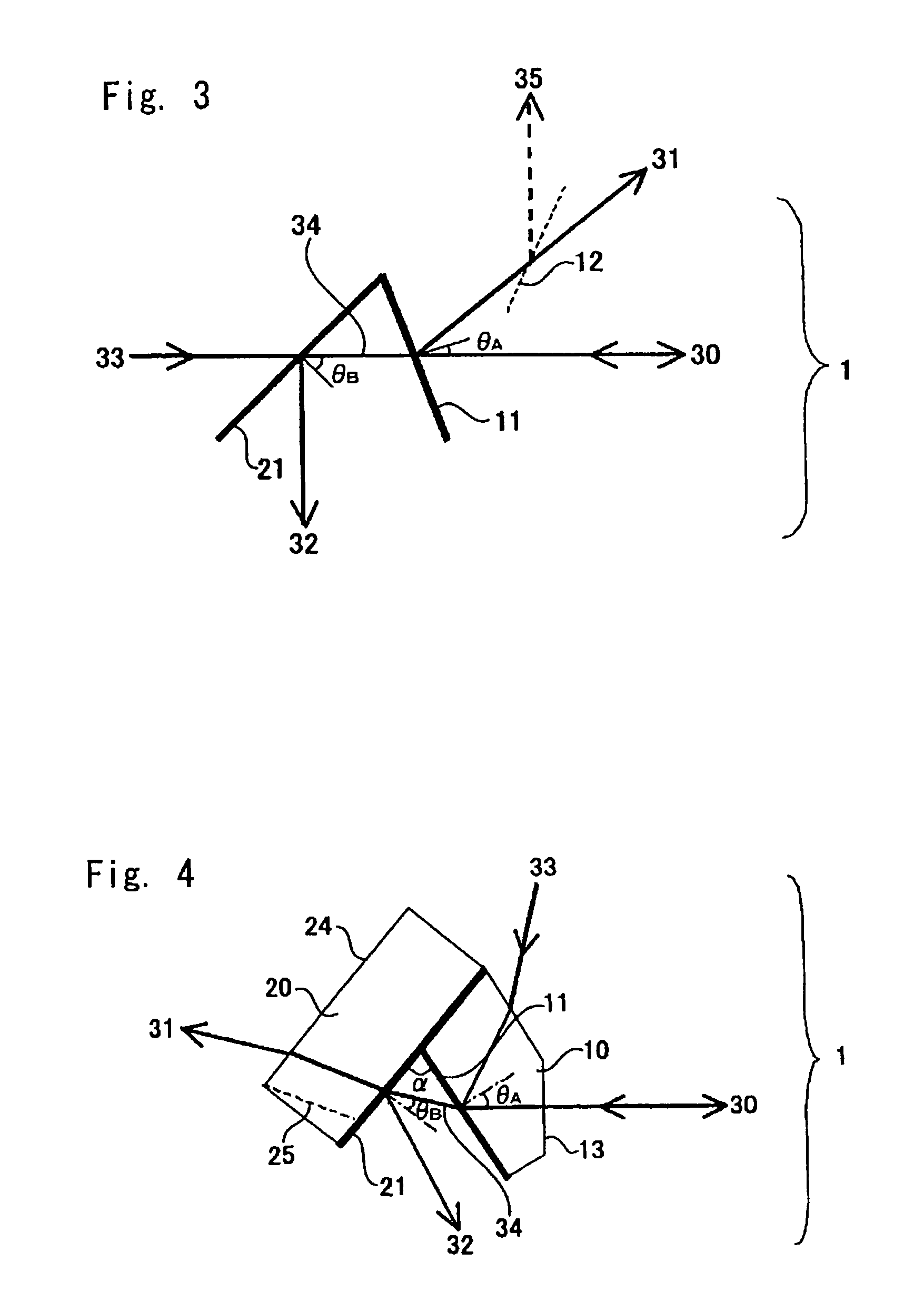Wavelength division multiplexer
a wavelength division multiplexer and wavelength division technology, applied in the field of wavelength division multiplexers, can solve the problems of large equipment size, high installation cost, large equipment size and high installation cost, and increase the cost, and achieve the effects of preventing characteristic deterioration, good wavelength division multiplexing characteristics, and small siz
- Summary
- Abstract
- Description
- Claims
- Application Information
AI Technical Summary
Benefits of technology
Problems solved by technology
Method used
Image
Examples
embodiment 1
[0055]FIG. 1 is a schematic diagram illustrating an embodiment of a wavelength division multiplexer for separating wavelength multiplexed light consisting of at least three wavelength bands or combining wavelength bands into wavelength multiplexed light. In FIG. 1, an optical substrate and the like are omitted to schematically illustrate the wavelength division multiplexer.
[0056] As shown in FIG. 1, a wavelength division multiplexer 1 is composed of a first filter A 11 and a second filter B 21. The first filter A 11 and the second filter B 21 are supported by a single optical substrate or a plurality of optical substrates integrated together as described later, though not shown in this figure. Thus, the first filter A 11 and the second filter B 21 are configured to function as one optical element in a whole, thereby achieving miniaturization.
[0057] The light of λ3 moves from the direction indicated by a reference numeral 33. It is then reflected by the first filter A 11 in the dir...
embodiment 2
[0073]FIG. 2 is a schematic diagram illustrating another embodiment of a wavelength division multiplexer according to the present invention. The wavelength division multiplexer 1 shown in FIG. 2 is composed of the first filter A 11 and the second filter B 21 placed on different surfaces of a single substrate C 40. The single substrate may be replaced by a plurality of optical substrates integrated together.
[0074] As shown in FIG. 2, the light of λ3 coming from the direction 33 passes through the first filter A 11 and is combined with the light of λ1 and λ2 coming through the substrate, creating three-wavelength multiplexed light. On the other hand, two-wavelength multiplexed light of λ1 and λ2 is reflected by the first filter A 11 and enters the second filter B 21, where the two-wavelength multiplexed light is separated into the light of λ1 and the light of λ2.
[0075] A short wave pass filter is used for the first filter A 11, and an optical bandpass filter is used for the second f...
embodiment 3
[0093]FIG. 3 is a schematic diagram illustrating yet another embodiment of a wavelength division multiplexer according to the present invention. The first filter A 11 combines or separates the light 31 of λ1 and the two-wavelength multiplexed light 34 of λ2 and λ3 into or from three-wavelength multiplexed light. The second filter B 21 combines or separates the light 32 of λ2 and the light 33 of λ3 into or from two-wavelength multiplexed light 34.
[0094] The relationship of the center wavelengths of the three-wavelength multiplexed light of this invention satisfies 0.94≦λ2 / λ1≦0.98 and 0.20≦λ3 / λ1≦0.94. This is because the present invention uses an edge filter to combine or separate wavelength multiplexed light, and it is difficult for the edge filter to separate the wavelength bands closer than the above range.
[0095] In the structure shown in FIG. 3 where the first filter A 11 combines or separates one wavelength band into or from three-wavelength multiplexed light, it is preferred t...
PUM
 Login to View More
Login to View More Abstract
Description
Claims
Application Information
 Login to View More
Login to View More - R&D
- Intellectual Property
- Life Sciences
- Materials
- Tech Scout
- Unparalleled Data Quality
- Higher Quality Content
- 60% Fewer Hallucinations
Browse by: Latest US Patents, China's latest patents, Technical Efficacy Thesaurus, Application Domain, Technology Topic, Popular Technical Reports.
© 2025 PatSnap. All rights reserved.Legal|Privacy policy|Modern Slavery Act Transparency Statement|Sitemap|About US| Contact US: help@patsnap.com



